Perhaps, I too dramatize the situation, but things from AMD in recent times. “Red” for the year managed to give NVIDIA another 10% of the market of graphic accelerators. Now “green” possess an impressive degree in the amount of 81.1%. The appearance last year of the rulers of the Radeon R7/R9 300 and Radeon R9 Fury/Nano corrected a situation, but just a little bit longer. On the processor market even worse. AMD is already two years does not demonstrate fundamentally new developments. So 2016 will largely be the determining factor for the Corporation. “Shoot” Zen and Polaris case will go to the mountain. It is expected that the first solutions based on new architectures will be available in the second half of the year.
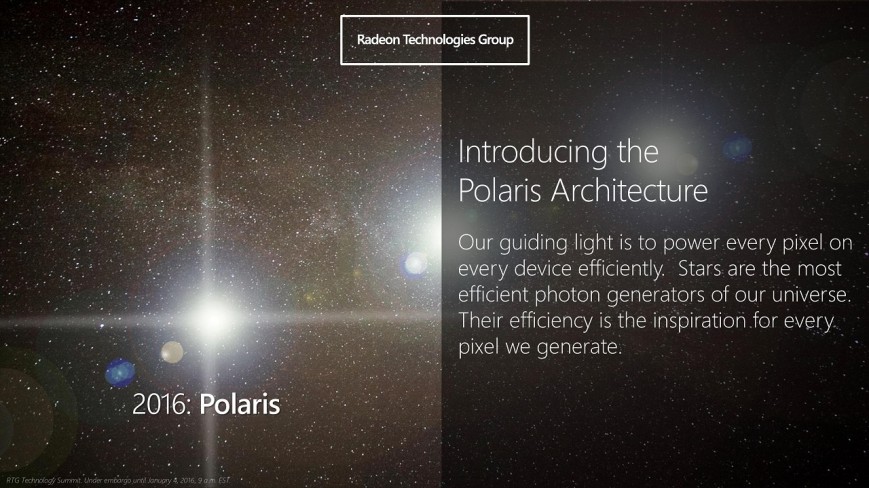
The first decisions on the Pascal architecture will be in mid-2016
In my opinion, the name for the new graphics architecture AMD has chosen not by chance. Polaris (the North star) is perhaps the most famous star, if not to take into account the Sun. It is called guiding. Feel the symbolism?
But it’s the lyrics. Polaris is not just a graphical architecture. It is a whole system that includes multiple hardware modules: multimedia units, new memory controllers and display, as well as the new caching subsystem. As for the graphics, the minimum improvements. The performance will respond to the familiar architecture of GCN (Graphics Core Next) submitted in 2011. But now in its fourth generation.
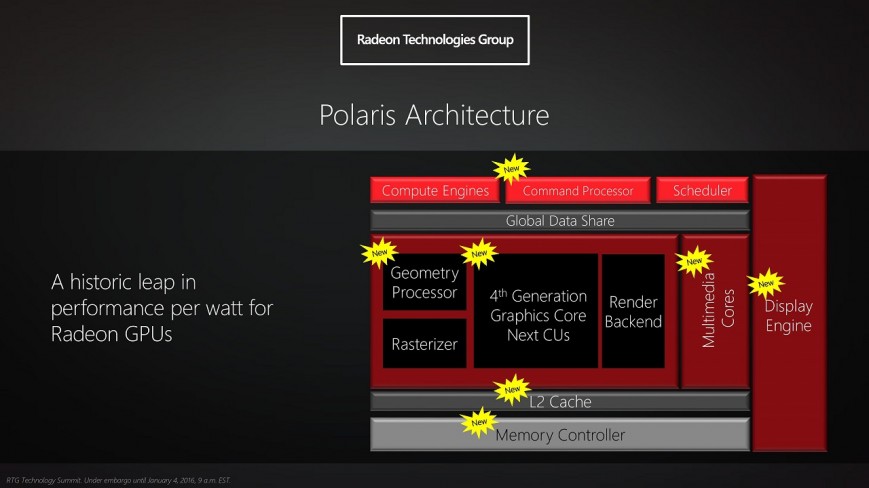
A block diagram of a graphics processor Polaris
Updated GCN architecture 1.3 will get a new block prefetch instructions (instruction pre-fetch). It will significantly reduce the idle time of the performing of the device by the Prefetcher code. The second novelty is the Manager of the execution of tasks (hardware scheduler). It will accelerate the distribution of tasks between hardware resources. Finally, GPUs Polaris will receive the improved algorithm of drop invisible polygons and compression function the contents of memory.
AMD does not reveal all of the innovations used in GCN 1.3. The company representatives only say that the new architecture will double the performance per watt of consumed energy in comparison with its predecessor. However, 3/4 of that increase will ensure that the transition to 14-nanometer process technology.
The use of new technological standards — a long-awaited event. As I said, 28-nanometer era lasted more than five years. For the first time GPUs will no longer be planar. They will go on a three-dimensional FinFET.

The production evolution of graphics chips
During the design and development of Polaris was initially taken into account the characteristics of the new process and three-dimensional transistors. The main advantage of the FinFET is a serious reduction of leakage currents and improve energy efficiency. The use of this technology allows not only to significantly increase the number of transistors, but also significantly reduce the dispersion of characteristics of the chips for one model. This feature increases the speed by increasing the basic clock frequency. Secondly, reducing the variability of characteristics reduces the percentage of unusable crystals. It turns out that using 14-nanometer FinFET technology will reduce energy consumption by 50% and increase productivity by 20-35%. In sum, Polaris will be twice as fast as the previous generation per watt of electricity consumed.
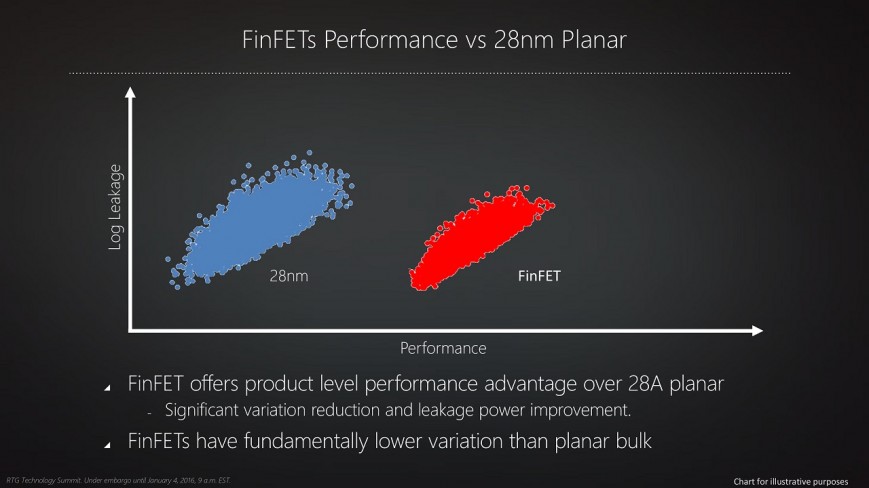
The difference between a 28-nm process and a 14 nm FinFET
Significant increase in energy efficiency will allow AMD to return to the market of notebook graphics. It is believed that Polaris first chips will appear in laptops, and then the company will present a full discrete graphics card. Or start with the output of 3D-accelerators price ranges Low – and Middle-end.
The event “red” has demonstrated the capabilities of the Polaris architecture. Engineering sample gave stable 60 FPS with medium graphics quality settings at Full HD resolution in the game Star Wars: Battlefront (map X-wing Training Map). The system, consisting of Core i7-4790K and 16 GB of RAM, and was consuming only 89 watts. Similar stand with GeForce GTX 950 on Board at the same settings and the same capacity to eat almost twice as much — 140 watts.
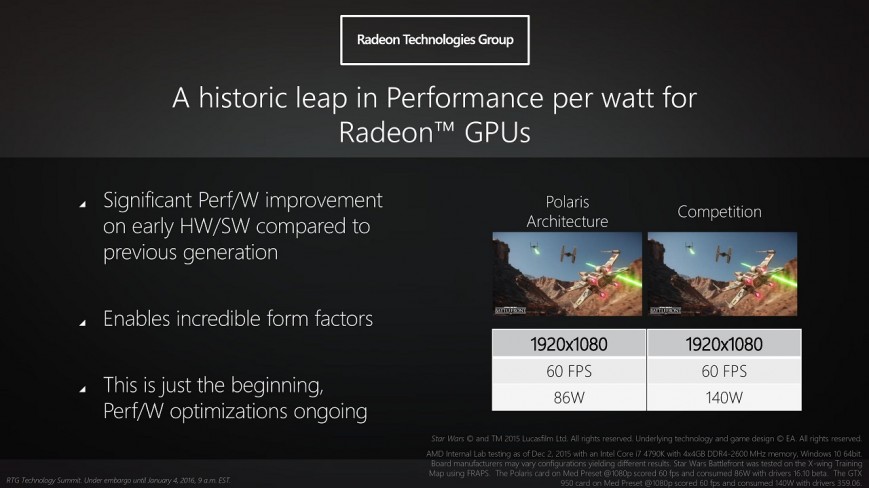
The performance of Polaris in Star Wars: Battlefront
There are two points that confuse me. First, we compared 14 nm sample with the graphics card chip which is produced by 28-nm process. Test clear, but in 2016 it would be fair to compare the performance of Polaris with Pascal, because NVIDIA likewise initiate new technological standards. For example, Maxwell “green” already proved how they can increase the energy efficiency of their products.
Secondly, to use the GeForce GTX 950 is not quite correct, as it is based on a pared-down graphics chip GM206. More relevant results, in my opinion, would be a comparison of Pascal engineering sample with GeForce GTX 960.
Yet known who will produce the new chips for AMD. Such technology manufacturers that have just three major companies: TSMC, GlobalFoundries and Samsung.
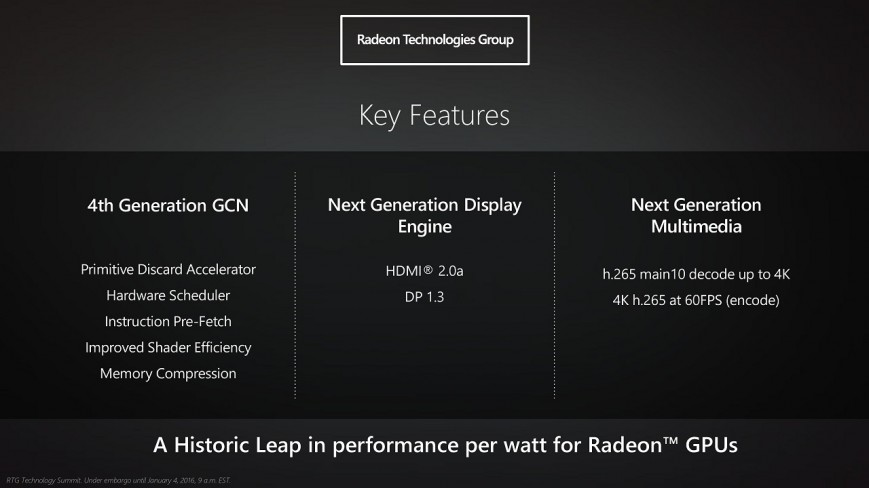
The architectural features of the AMD Polaris
The Pascal architecture is a versatile architecture. Apparently, with an eye on the use of game consoles next generation. In fact, AMD will present a full system-on-chip with a large number of hardware modules for accelerating specific functions. The family of chips AMD Pascal will be the first solution that natively supports a resolution of 8K. Radeon with GCN 1.3 will get video decoding for HEVC/H. 265 Main profile 10, that is, they “pull” the image reproduction color gamut of BT.2020 (10-bit colour depth) and colour downsample 4:2:0.
Finally discrete graphics will get a HDMI 2.0 and DisplayPort 1.3. The first will allow you to display a resolution of 4K (4096×2160 pixels) with a refresh rate of 60 Hz. This port has all the adapters on the NVIDIA Maxwell architecture. The second video output will support the 8K resolution (up to 7680х4320 pixels) at 60Hz or 4K, but when I scan 120 Hz.

